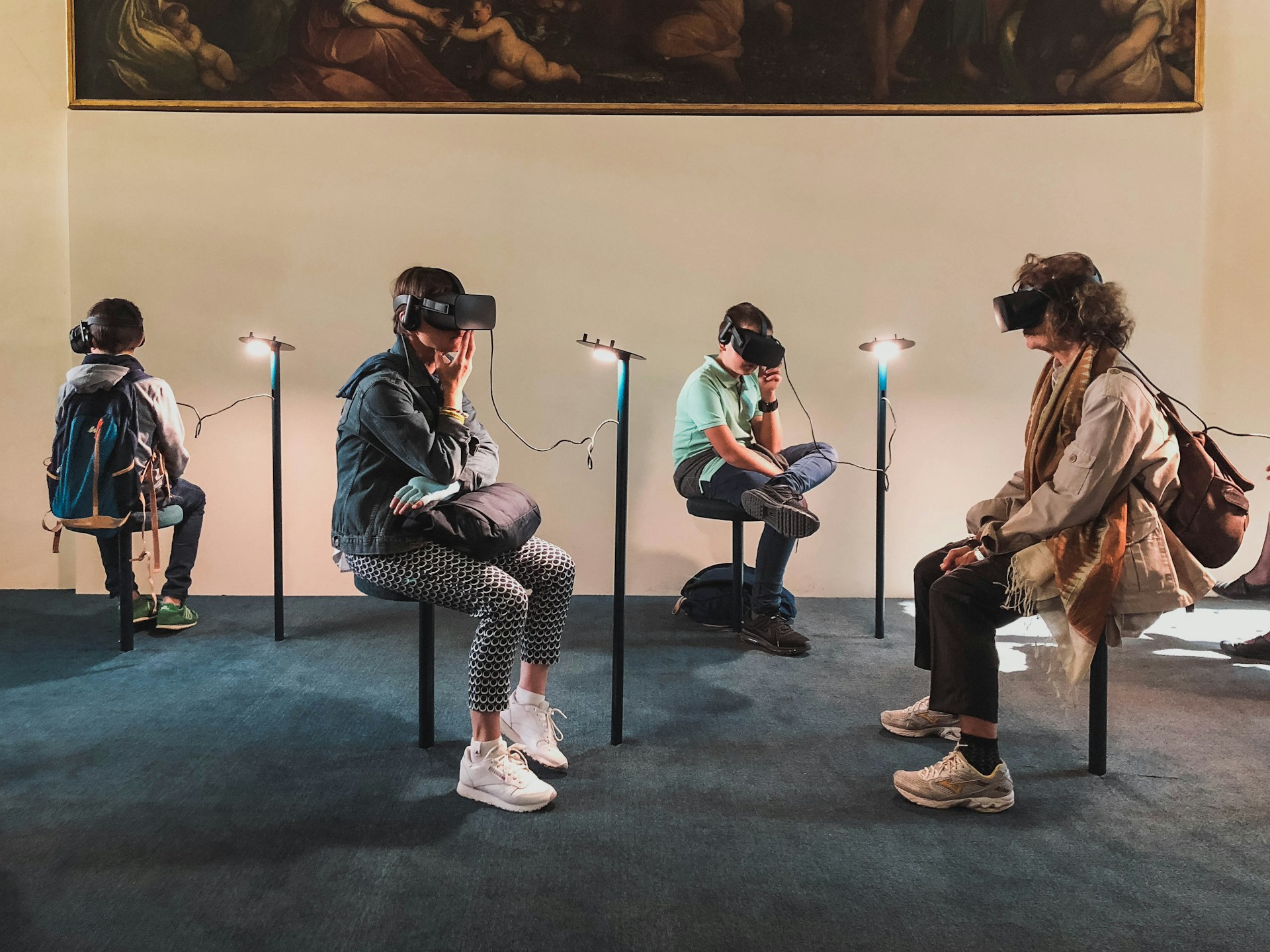In recent years, Augmented Reality (AR) and Virtual Reality (VR) have been at the forefront of technological innovation, transforming how we interact with digital content and the world around us.
These two technologies, although often mentioned together, serve different purposes and offer unique experiences. Understanding their distinctions is crucial for tech enthusiasts and gamers who are keen to explore the cutting edge of immersive technology.
What is Augmented Reality (AR)?
Augmented Reality overlays digital information onto the real world, enhancing your perception of your environment. AR applications can be experienced through various devices such as smartphones, tablets, and AR glasses.
The key aspect of AR is its ability to blend the digital with the physical, providing an enhanced view by adding layers of information, graphics, or other data.
Key Features of Augmented Reality
- Real-World Integration: AR supplements the real world with digital elements, allowing users to see digital overlays on their actual surroundings.
- Interactivity: Users can interact with digital objects integrated into the physical world, making AR applications highly engaging.
- Accessibility: Most AR experiences can be accessed through everyday devices like smartphones and tablets, making it widely accessible.
- Use Cases: Commonly used in gaming (e.g., Pokémon GO), navigation, education, retail (e.g., virtual try-ons), and industrial applications (e.g., maintenance and training).
What is Virtual Reality (VR)?
Virtual Reality, on the other hand, creates a completely immersive technology environment that replaces the real world.
By wearing a VR headset, users are transported into a 3D virtual space where they can explore and interact with digital content in a highly immersive technology manner. VR aims to provide a sense of presence in a virtual world, isolated from the physical environment.
Key Features of Virtual Reality
- Immersive Experience: VR offers a fully immersive technology experience by creating a 3D digital environment that users can explore.
- Isolation from the Real World: Once the VR headset is on, users are entirely cut off from their physical surroundings, which enhances the sense of immersion.
- Specialized Equipment: VR typically requires dedicated hardware such as VR headsets (e.g., Oculus Rift, HTC Vive, PlayStation VR) and sometimes motion controllers.
- Use Cases: Predominantly used in gaming, but also in fields such as training simulations, virtual tours, treatment of phobias, and social VR.
Comparing AR and VR
While both AR and VR are transformative technologies, they differ significantly in terms of application, user experience, and hardware requirements.
User Experience
- AR: Enhances real-world experiences by overlaying digital content. It keeps users present in their physical environment while adding interactive elements.
- VR: Offers a completely immersive technology experience by creating a new, virtual environment. Users are fully engaged in the digital world, with a strong sense of presence and isolation from the real world.
Hardware Requirements
- AR: Typically requires a smartphone, tablet, or AR glasses that can project digital content onto the physical world.
- VR: Requires a VR headset and sometimes additional accessories like motion controllers. High-end VR systems may also require a powerful PC or gaming console.
Applications and Use Cases
- AR: More commonly used in applications that benefit from blending digital and physical worlds, such as navigation apps, gaming (e.g., Pokémon GO), education, retail (e.g., virtual try-ons), and industrial applications.
- VR: Primarily used in gaming for a fully immersive technology experience, but also in training simulations, virtual tours, therapy, and social VR platforms.
The Future of AR and VR
The future of AR and VR is incredibly promising as both technologies continue to evolve and expand into new areas.
Augmented Reality
AR is likely to become more integrated into our daily lives as technology advances. We can expect to see more sophisticated AR glasses and contact lenses, expanding its use in education, healthcare, retail, and remote work.
Enhanced AR applications could revolutionize how we interact with the world, providing real-time information and interactive experiences seamlessly.
Virtual Reality
VR will continue to push the boundaries of immersive technology experiences, especially in gaming and training. Advances in haptic feedback, motion tracking, and higher-resolution displays will enhance the sense of presence in virtual environments.
Additionally, social VR platforms will become more prevalent, offering new ways to connect and interact with people globally.
Conclusion
Augmented Reality and Virtual Reality are two sides of the same coin, each offering unique ways to interact with digital content. While AR enhances our real-world experiences by adding digital elements, VR immerses us in entirely new virtual environments.
For tech enthusiasts and gamers, both technologies offer exciting opportunities to explore new frontiers in digital interaction. As AR and VR continue to evolve, their distinctions will become more pronounced, and their applications will become more diverse.
By understanding these differences and keeping an eye on emerging trends, you can stay ahead in the ever-changing world of immersive technology.
Whether you’re looking to enhance your gaming experience or explore new applications in various industries, AR and VR have something valuable to offer. Keep exploring, stay curious, and enjoy the journey into the fascinating worlds of Augmented and Virtual Reality!

